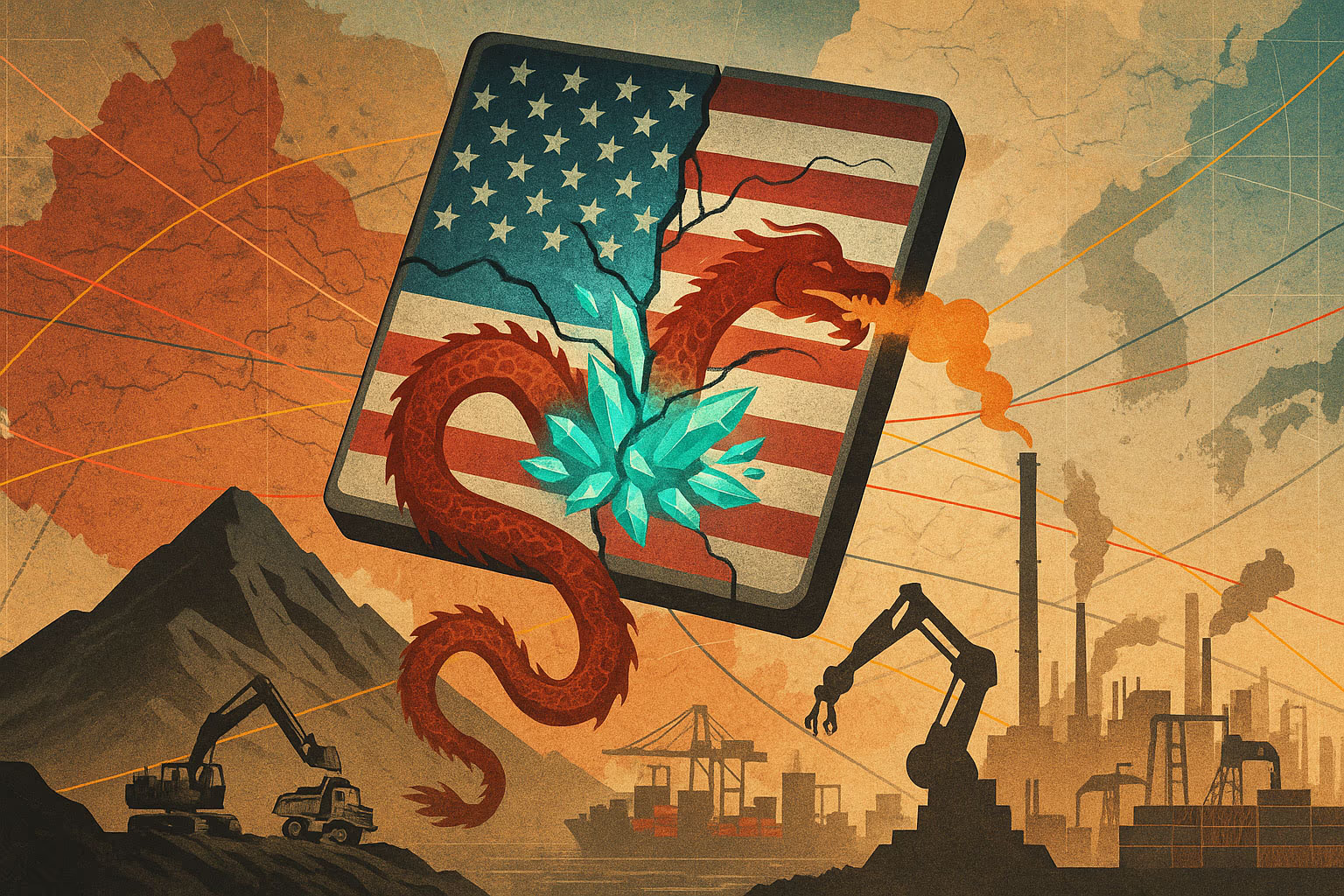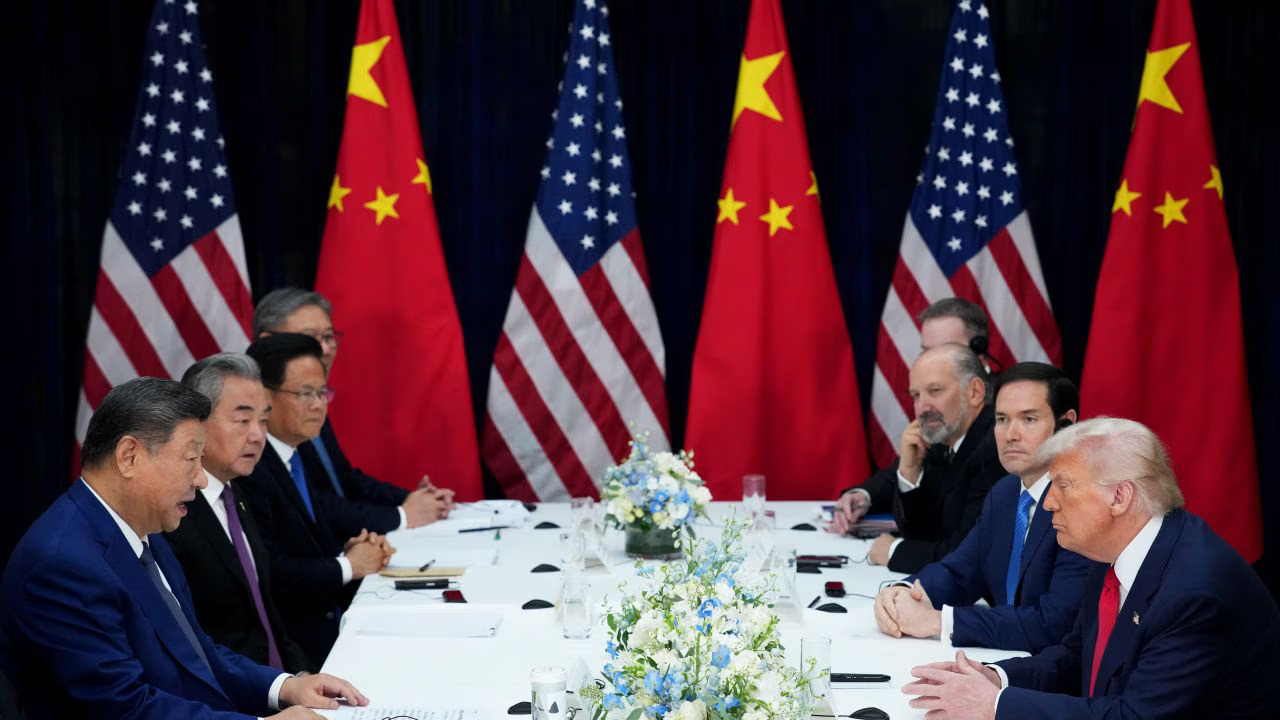Trump and Xi Jinping have announced a truce in the trade war that began back in 2018. Meeting in Busan, South Korea, the two leaders agreed on reciprocal visits and a partial easing of tariffs—but the deal looks more like a temporary pause than a lasting peace. Beijing has withstood the pressure and emerges from the confrontation with a tangible advantage.
When Donald Trump launched a trade war with China in April, threatening to impose tariffs of up to 145%, Beijing declared it would not yield to blackmail and would “fight to the end.”
The key question now is whether the consensus reached on Thursday in Busan, South Korea, means the war is truly over—and if so, on whose terms.
Trump described the meeting as “12 out of 10.”
Both sides have dropped their harshest measures, but the deal resembles a ceasefire rather than a solid peace that would redefine the boundaries of U.S.-China relations. Still, the outlines of a more stable diplomatic framework are emerging: the leaders agreed to exchange visits within the year. The move diverges sharply from the expectations of the anti-China bloc in Congress and is likely to raise concerns among members of both parties.
One of the core problems was that Washington never articulated clear strategic goals when it launched the trade war. Behind slogans about protecting traditional industries, defending the tech sector, punishing unfair practices, and containing China as a rival, there was no coherent sense of priority. Gradually, the conflict evolved in the eyes of some within the administration from an economic dispute into a geopolitical test of strength between two superpowers—one the entire world was watching.
The past six months unfolded in a state of constant turbulence: fluctuating tariffs, export restrictions, threats and countermeasures, antitrust investigations, and five rounds of negotiations—from Madrid and London to Kuala Lumpur—culminating in a two-hour one-on-one meeting between Trump and Xi, their first since 2019.
Throughout the crisis, the average U.S. tariff rate on Chinese goods stood at 55%—lower than the threatened 145%, but still high enough to severely test the resilience of China’s economy. In effect, it passed that test.

A Trade War With China That Is Nearly Impossible to Win
The U.S. Is Confronting the Consequences of Its Own Strategy

The U.S. Economy as a Source of Global Instability
American Policymaking Increasingly Resembles That of Emerging Markets
The outcome of the Busan meeting will take time to assess. For now, it amounts to a framework agreement—one that could collapse at any moment, as Canada’s experience has shown. In such deals, the devil is usually in the details, but with Trump, it often lies in their absence.
In essence, the two sides have returned to the previous status quo. China has agreed to postpone for at least a year the introduction of export restrictions on rare earth materials, to resume purchases of American soybeans, and to tighten controls on the export of precursors used to produce fentanyl—the synthetic opioid at the center of a deadly epidemic in North America. Those shipments had prompted Trump to impose 20% tariffs, which he has now agreed to halve. The average U.S. tariff rate will fall to 45%—still higher than India’s. Washington is also suspending plans to expand export restrictions.
Speaking to reporters aboard his plane en route from South Korea, Trump dodged a question about easing licensing rules for Nvidia’s artificial intelligence chips to China, saying the company’s new, most powerful chip, Blackwell, “wasn’t mentioned in the conversation” and that it was “a matter between China and Nvidia.” The issue is being closely watched in Washington.
As for fears that Trump might be ready to abandon Taiwan, he dismissed them as unfounded—saying the topic “was not discussed at all.”

Over the past few months, both sides have tested each other’s levers of pressure. For the United States, it was an alarming discovery how effectively China redirected exports originally bound for the American market to other Asian countries. Predictions of a Chinese economic crisis did not come true: the stock market rose by 34% in dollar terms—twice as much as the S&P 500. The trade surplus is expected to exceed last year’s level. In the U.S., meanwhile, tariff-fueled inflation has climbed to a politically risky 3%.
China’s ban on purchasing American soybeans—a $12 billion market—hit the agricultural regions of the Midwest hard, pushing many farmers to the brink of bankruptcy as Brazil stepped in to fill the gap.
The most painful blow came from Beijing’s retaliation after Washington tightened sanctions in September, when an additional 10,000 Chinese companies were reportedly placed under restrictions. In response, China announced an expansion of export controls on rare earth elements—critical components for the production of electronics, batteries, vehicles, and weapons.
If fully implemented, these measures would give China the power to disrupt the production of countless goods worldwide that rely on even trace amounts of rare earth materials of Chinese origin. The new rules, published on October 9 and set to take effect in November, underscored how the United States remains deeply dependent on Chinese dominance in this supply chain.

China Uses Rare Earth Metals as Leverage Against the U.S.
New Restrictions Threaten the Global Economy and Microchip Supply Chains

How China Conquered the Rare Earth Metals Market and Took Control of Global Supply
What It Means for the U.S. and Europe Amid Rising Geopolitical Competition
Seeking to rally global public opinion against Beijing’s “blackmail tactics,” U.S. Trade Representative Jamieson Greer said on October 15: “China’s announcement is nothing more than an attempt to seize control of global supply chains.” America, it turned out, could be pressured too—something it might have anticipated earlier.
According to some reports, Treasury Secretary Scott Bessant persuaded Trump that the cost of confrontation had become too high—and that realization ultimately pushed both sides toward mutual concessions.
The truce is set to last one year—a timeline that likely works in China’s favor. It gives Xi time to advance the country further in next-generation technologies—from green energy to industrial manufacturing—and to consolidate gains in key sectors of the new five-year plan.
Equally significant is Beijing’s effort to present itself to the world as a measured and responsible power—not seeking confrontation but capable of withstanding U.S. pressure. The contrast in political styles is stark: Xi fights a “war of positions,” while Trump favors a “war of maneuver,” where instinct outweighs strategy. For now, the advantage—or at least the absence of defeat—belongs to Xi.
